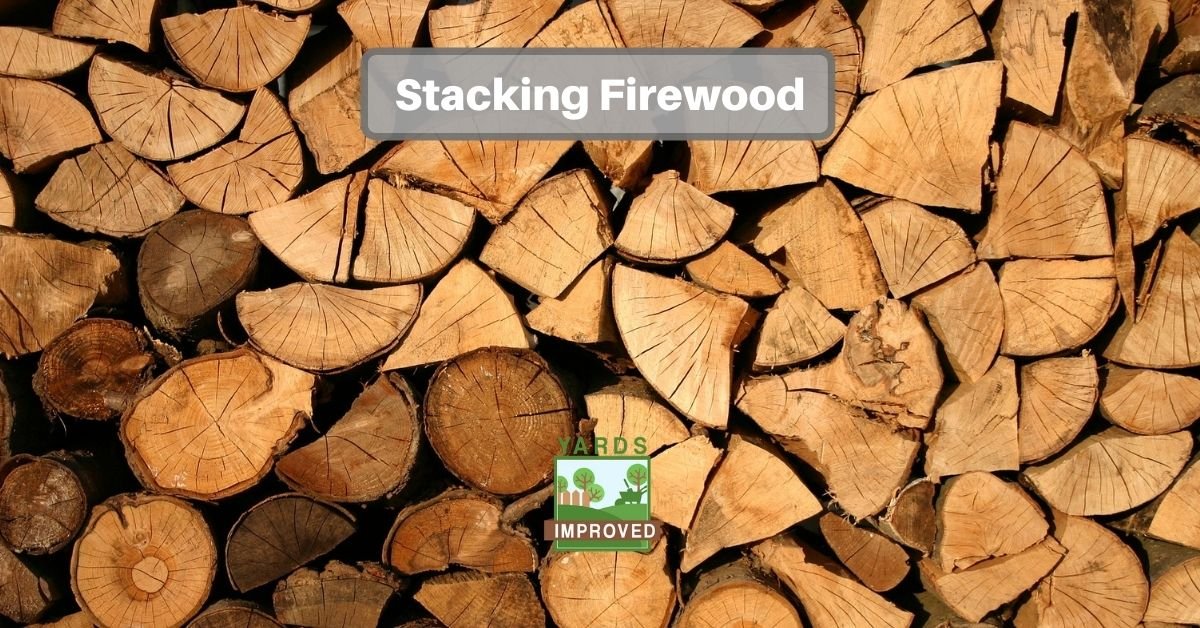If you have trees on your property, you’ll sometimes have to trim them or even cut some down. And it’s great when you can put that wood to good use in your fireplace or fire pit. But to get the most out of it, you need to store it correctly.
If you’re new at this, you might need some pointers for how to stack and store firewood. Even if you’ve been handling firewood for a while, though, you might pick up some tips and hints that will improve your process!
The Basic Aims
There are three basic goals when you store your firewood. Keep these in mind to get the most out of your firewood stack!
Keep It Dry
To burn properly, firewood has to be given the chance to dry out.
That means the wood’s internal moisture needs to evaporate. At the same time, you don’t want water getting into the wood from outside.
Keep It Safe
No, we’re not worried about your wood being stolen. That could happen, sure, but it’s pretty rare.
You do, however, want to make sure your wood is stacked securely so that the pile won’t slide or tip over. That means being careful about how you stack it.
Easy To Access
Finally, you want it to be easy to access. When you need wood, you don’t want to go through a lot of trouble to get it. That means the height of the stack and its location should be thought about ahead of time.
Key Steps For Stacking Your Firewood
So now that you know what the goals are, let’s look at how to achieve them.
Allow Enough Time For Proper Drying
Patience is a virtue, and it’s one you’ll need to prepare firewood. In most climates, it will take about six months for wood to dry sufficiently to be good for burning.
Wood that isn’t dried properly won’t burn as well. It doesn’t produce nearly as much heat. It also tends to be smokier and leave more buildup in your chimney.
The wood you cut in spring should be ready for the next winter. The sooner you split the logs, the better it will dry.
Keep this in mind when you’re stacking wood, too. If you cut more in the fall, you may want to start a new pile for it. That way, the properly-dried wood won’t be buried under fresher logs.
Choose A Spot
You’ll need to pick a good spot for your log pile, too. As we mentioned above, you want it to be convenient – you don’t want to have to haul the wood too far! At the same time, though, you want to keep it at least 20 feet from your house.
Why? Well, the woodpile can become a nice house for pests like insects and rodents. Keeping them a distance away from the house will make it less likely they notice the even more attractive lodgings!

Your woodpile should be on a section of flat ground. You’ll also want it to be as dry as possible, so if you have a spot that’s protected from the rain, that’s even better.
You’ll need supports on either end – a pair of trees are great. But you can always construct your own, too.
Stake It Out
The typical woodpile – at least in North America – consists of a single line of wood. To keep it in place, you’ll need stable supports at either end.
That could be two trees, but you might not find two that are suitable. So you could use some kind of stake in their place.
Metal stakes such as rebar can serve the purpose. Be sure to drive them far enough into the ground. We recommend two stakes at either end of your proposed pile.
In place of metal stakes, you could use some long sections of branch or trunk. Four pieces about 2 inches in diameter work well. Be sure to drive them firmly into the ground!
Keep It Off The Ground
The ground is going to get wet, so you don’t want your firewood resting right on it. A concrete slab or other surface is ideal. You could even use two long sections of wood to rest the woodpile on.
You only need an inch or two of clearance – enough to keep the wood from sitting in the mud!
Expose It To the Air
Another key factor to helping your wood dry thoroughly is to let the air circulate.
Don’t stack it too close to a fence or other structure. It’s best to keep at least a foot away from a hedge, even. You want air to be able to move freely through the stack.
Keep this in mind when stacking the wood, too. Don’t obsess about making the pieces fit together. Instead, it’s best to allow as much exposure as possible. Sure, it has to be stable. But it also needs air.
Don’t drape your woodpile in a tarp or other cover. You can, though, hang a tarp a couple of feet above it to keep most of the rain off. It’s always a good idea to slightly slope the tarp so the water will run off.
Stack Safely
As your pile grows, it runs the risk of getting lopsided. And in a worst-case scenario, it could tip over on top of someone! Be sure to stack carefully so that the pile climbs straight up and doesn’t lean either backward or forward.
You may have to reposition your logs a couple of times to get the right fit – they’re not exactly as perfectly cut as LEGOs. But taking the time to keep them in order as you go along will save you from headaches – and potential danger – later on.
Watch For Pests
Finally, watch for the pests that will sure make your woodpile into a comfy home.
Our first suggestion would be not to worry too much about it! Your woodpile is still part of the great outdoors. And it can serve as a nice shelter for mice, chipmunks, and a whole bunch of creepy crawlers. And for months out of every year, that’s fine. They won’t bother you and you don’t have to bother them.
But when it comes time to take the wood to the fire, keep an eye out for where you reach. Most critters will run away when you approach, anyway. You might encounter some spiders or ants, though. No big deal, but it’s best to be prepared! Most likely, you’re only going to come across some webs.
As long as you keep your wood stacked far enough from your house, these creatures are unlikely to do any damage. But we don’t want you to be shocked when you run into them!
Conclusion
To get the most out of your firewood, you need to stack it right and age it long enough. Be careful to keep it stacked safely and keep it dry as much as possible. With a few simple steps, you’ll be able to enjoy a crackling fire so much more when the cold weather comes!









